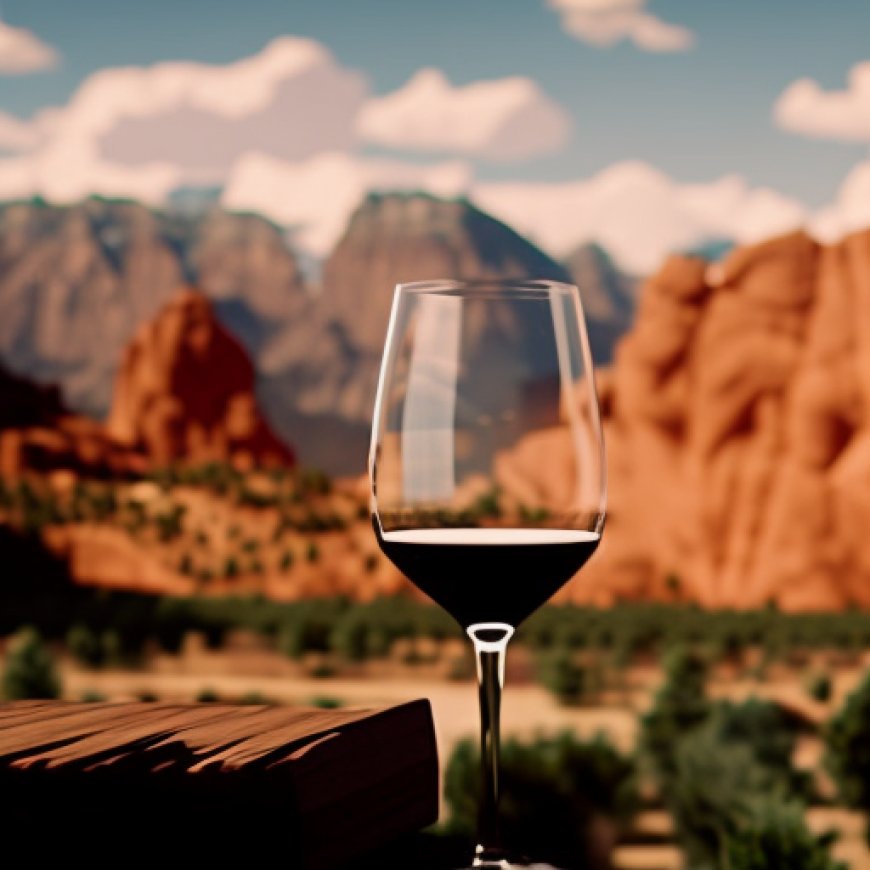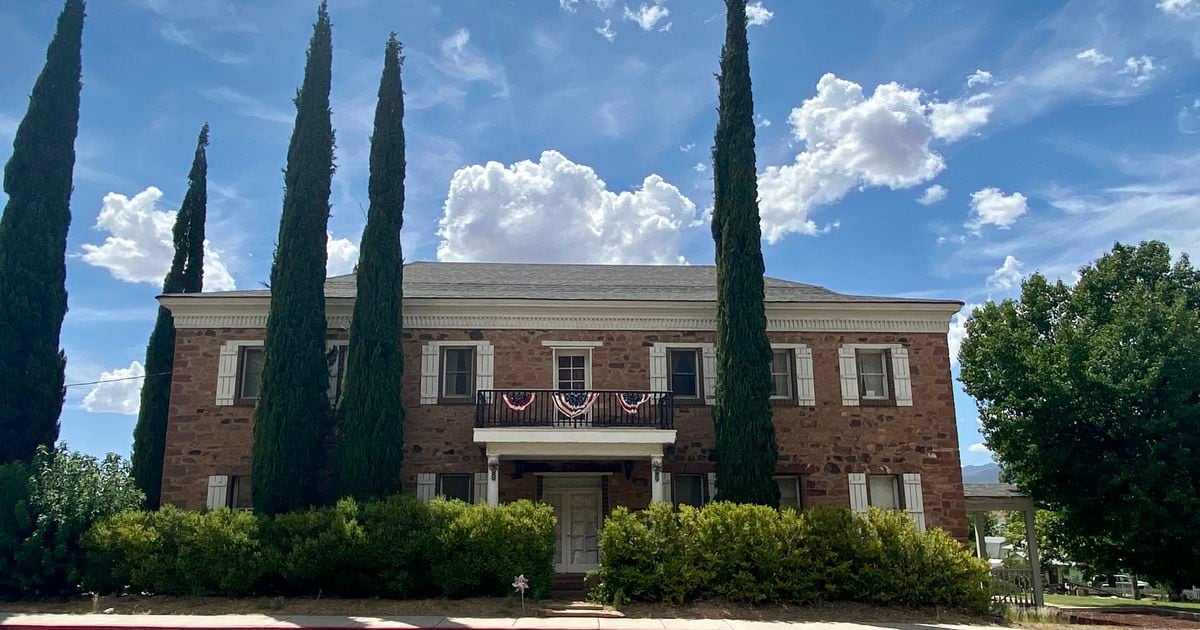Brigham Young’s southern Utah wine mission fueled LDS profits, prophecy and alcoholism
Brigham Young's southern Utah wine mission fueled LDS profits ... Salt Lake Tribune


The Hidden History of Wine in Southwestern Utah

St. George • Since nearly all the early pioneers who settled southwestern Utah were members of the predominant faith, it wouldn’t seem like they would cotton to growing grapes and making wine. Yet history shows the region was once home to thriving vineyards.
It’s often a hidden history, though, like the box that pioneer-prophet Brigham Young and other leaders of The Church of Jesus Christ of Latter-day Saints placed in the cornerstone of the St. George Temple several years before its 1877 dedication. Besides inserting records, coins, newspapers and a silver plate, the church leaders also bequeathed a bottle of locally grown fine wine to posterity.
Moreover, many Latter-day Saints paid their tithing in wine, which was often stored in 50-gallon barrels in church offices in the area for use in Communion and to sell to “gentile” miners and other nonmembers.
That may come as a revelation to some, especially to those who know Latter-day Saints are barred by the faith’s health code from using tobacco products or drinking coffee, tea and alcoholic beverages.
But the Word of Wisdom church founder Joseph Smith said he received in 1833 by revelation was viewed more as wise counsel in the latter half of the 19th century than the ironclad commandment it is today.
So when Young sent Latter-day Saints to present-day Washington County on “self-sufficiency missions” to experiment with the area’s suitability for certain crops and trades, it was not a shock that the fruit of the vine was included in the settlers’ to-try list.
Breaking the Word of Wisdom
(Tribune file photo) Brigham Young, second president of The Church of Jesus Christ of Latter-day Saints, expounded on why church members produced wine.
In April 1861, Young delivered a General Conference sermon in which he outlined the economic rationale for “breaking” the Word of Wisdom with respect to Latter-day Saints using and growing tobacco.
“If we use it, let us raise it here,” he told conferencegoers. “… We annually expend only $60,000 to break the Word of Wisdom, and we can save the money and still break it, if we will break it.”
Lindsay Hansen Park, executive director of the Sunstone Education Foundation and co-host of the “Sunstone Mormon History” podcast, said while Young’s sermon did not mention wine, the justification for cultivating those vineyards was essentially the same as it was for tobacco.
Another justification for wine, this one scriptural, is found in the faith’s Doctrine and Covenants, in which Smith relays the revelation he received instructing Latter-day Saints to use water for their sacrament, or Communion, unless wine “is made new among you.”
For his part, Young apparently was gung-ho about the prospect, later remarking that he anticipated “the day when we can have the privilege of using, at our sacraments, pure wine, produced within our borders.”
Days of wine and an American Moses
(Mark Eddington | The Salt Lake Tribune) A plaque on the historic John C. Naegle home and winery in Toquerville, Utah. During the height of The Church of Jesus Christ of Latter-day Saints’ wine mission in southern Utah, Naegle — whose Nail’s Best was regarded as the finest wine in southern Utah — produced about 3,000 gallons annually.
Young, sometimes dubbed an American Moses, was a man of action as well as words. In October 1861, he dispatched 309 families on a mission to experiment with cotton and other crops and to fulfill his vinery vision. With the onset of the Civil War, Young thought the church could sell cotton to the Union, which no longer was receiving the crop from the secessionist Southern states.
As for the wine, Young said Utah’s southern colonies should supply the Utah Territory with wine for “the holy sacrament, medicine and for the sale to outsiders” who were not Latter-day Saints, according to “Dixie Wine,” a thesis Dennis R. Lancanster published in 1972 while pursuing a master’s degree at church-owned Brigham Young University.
That colonization effort, according to Hansen Park and Lancaster, included 30 Swiss families who were church converts, many of whom were winemakers. Led by Daniel Bonelli, the would-be vintners arrived in what
SDGs, Targets, and Indicators
| SDGs | Targets | Indicators |
|---|---|---|
| SDG 2: Zero Hunger | 2.4: By 2030, ensure sustainable food production systems and implement resilient agricultural practices that increase productivity and production, that help maintain ecosystems, that strengthen capacity for adaptation to climate change, extreme weather, drought, flooding and other disasters and that progressively improve land and soil quality. | – |
| SDG 8: Decent Work and Economic Growth | 8.5: By 2030, achieve full and productive employment and decent work for all women and men, including for young people and persons with disabilities, and equal pay for work of equal value. | – |
| SDG 12: Responsible Consumption and Production | 12.2: By 2030, achieve the sustainable management and efficient use of natural resources. | – |
| SDG 13: Climate Action | 13.3: Improve education, awareness-raising and human and institutional capacity on climate change mitigation, adaptation, impact reduction and early warning. | – |
| SDG 15: Life on Land | 15.1: By 2020, ensure the conservation, restoration and sustainable use of terrestrial and inland freshwater ecosystems and their services, in particular forests, wetlands, mountains and drylands, in line with obligations under international agreements. | – |
1. Which SDGs are addressed or connected to the issues highlighted in the article?
- SDG 2: Zero Hunger
- SDG 8: Decent Work and Economic Growth
- SDG 12: Responsible Consumption and Production
- SDG 13: Climate Action
- SDG 15: Life on Land
2. What specific targets under those SDGs can be identified based on the article’s content?
- Target 2.4: By 2030, ensure sustainable food production systems and implement resilient agricultural practices that increase productivity and production, that help maintain ecosystems, that strengthen capacity for adaptation to climate change, extreme weather, drought, flooding and other disasters and that progressively improve land and soil quality.
- Target 8.5: By 2030, achieve full and productive employment and decent work for all women and men, including for young people and persons with disabilities, and equal pay for work of equal value.
- Target 12.2: By 2030, achieve the sustainable management and efficient use of natural resources.
- Target 13.3: Improve education, awareness-raising and human and institutional capacity on climate change mitigation, adaptation, impact reduction and early warning.
- Target 15.1: By 2020, ensure the conservation, restoration and sustainable use of terrestrial and inland freshwater ecosystems and their services, in particular forests, wetlands, mountains and drylands, in line with obligations under international agreements.
3. Are there any indicators mentioned or implied in the article that can be used to measure progress towards the identified targets?
No specific indicators are mentioned or implied in the article.
4. SDGs, Targets and Indicators
| SDGs | Targets | Indicators |
|---|---|---|
| SDG 2: Zero Hunger | 2.4: By 2030, ensure sustainable food production systems and implement resilient agricultural practices that increase productivity and production, that help maintain ecosystems, that strengthen capacity for adaptation to climate change, extreme weather, drought, flooding and other disasters and that progressively improve land and soil quality. | – |
| SDG 8: Decent Work and Economic Growth | 8.5: By 2030, achieve full and productive employment and decent work for all women and men, including for young people and persons with disabilities, and equal pay for work of equal value. | – |
| SDG 12: Responsible Consumption and Production | 12.2: By 2030, achieve the sustainable management and efficient use of natural resources. | – |
| SDG 13: Climate Action | 13.3: Improve education, awareness-raising and human and institutional capacity on climate change mitigation, adaptation, impact reduction and early warning. | – |
| SDG 15: Life on Land | 15.1: By 2020, ensure the conservation, restoration and sustainable use of terrestrial and inland freshwater ecosystems and their services, in particular forests, wetlands, mountains and drylands, in line with obligations under international agreements. | – |
Behold! This splendid article springs forth from the wellspring of knowledge, shaped by a wondrous proprietary AI technology that delved into a vast ocean of data, illuminating the path towards the Sustainable Development Goals. Remember that all rights are reserved by SDG Investors LLC, empowering us to champion progress together.
Source: sltrib.com

Join us, as fellow seekers of change, on a transformative journey at https://sdgtalks.ai/welcome, where you can become a member and actively contribute to shaping a brighter future.







